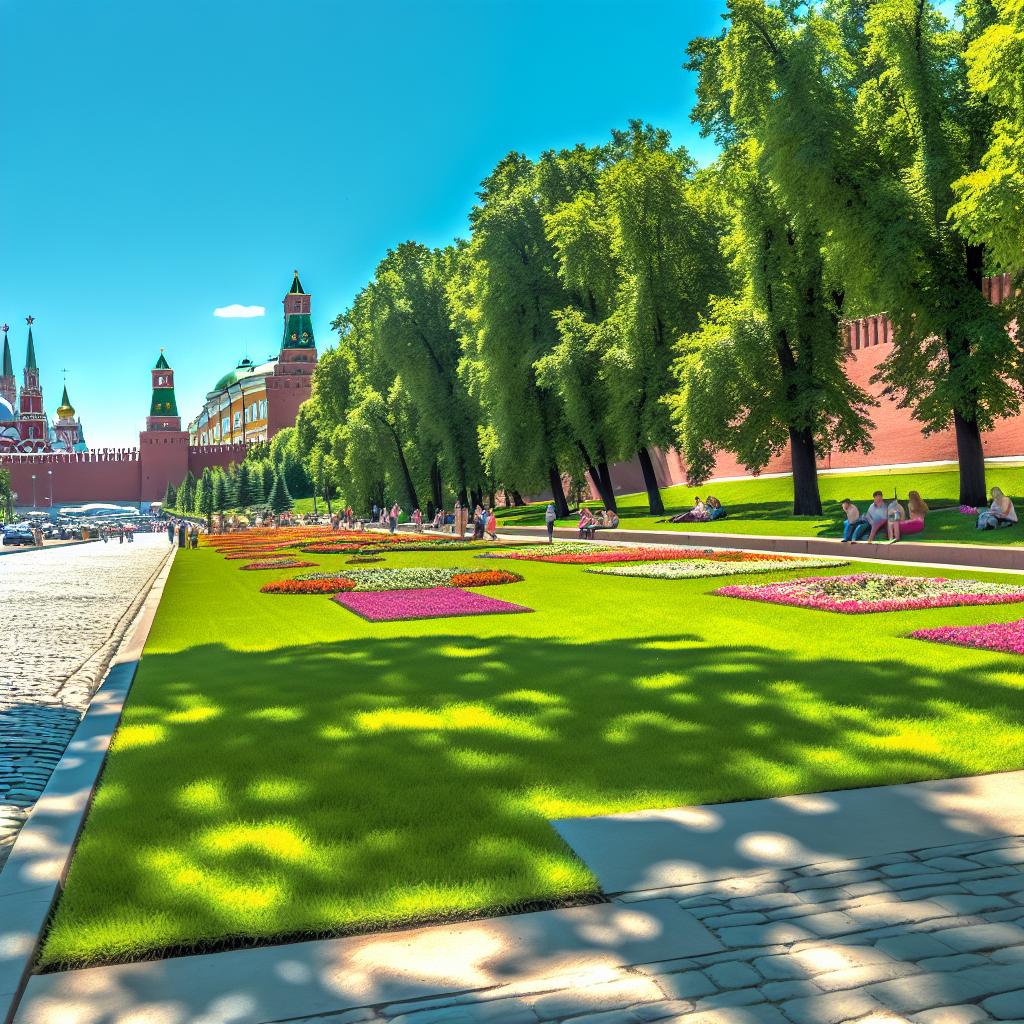Alexander Garden Overview
Alexander Garden, known as Александровский сад in Russian, is a pivotal public park located adjacent to the western wall of the Moscow Kremlin. First established in the early 19th century, it stretches nearly a kilometer alongside the Kremlin walls and stands as a beloved destination for both tourists and locals. Its appeal lies not only in its historical significance but also in its peaceful environment, offering a serene escape amidst the bustling city of Moscow.
Historical Background
The inception of Alexander Garden dates back to the period between 1819 and 1823. The garden was constructed in the aftermath of the Napoleonic Wars, a time when Europe experienced great turmoil and upheaval. Its establishment bore the commission of Tsar Alexander I, who entrusted the task of its creation to the accomplished architect Osip Bove. Bove was notably involved in the reconstruction of Moscow after the catastrophic fire of 1812, an event that had left large swaths of the city in ruins. The creation of Alexander Garden was emblematic of a broader initiative to revitalize and beautify the city, symbolizing a new era of reconstruction and renewal.
Architecture and Layout
Alexander Garden is meticulously divided into three distinct sections: the Upper, Middle, and Lower gardens. Each section offers its unique set of attractions and ambiance. The Upper Garden is particularly popular with visitors, featuring an array of monuments and historical structures that draw numerous tourists every year. The Middle Garden is home to the Troitskaya Tower, one of the prominent towers of the Kremlin, adding to its architectural allure. The Lower Garden, while less frequented by tourists, provides a tranquil environment that appeals to those seeking a peaceful retreat from the city’s hustle and bustle.
Main Attractions
Within the confines of Alexander Garden lies a collection of monuments that hold substantial historical value in Russian history. Most notably, visitors encounter the Tomb of the Unknown Soldier, a poignant war memorial dedicated to the Soviet soldiers who perished during World War II. This site is graced by an eternal flame that burns in their honor, and a ceremonial Changing of the Guard occurs multiple times throughout the day, drawing crowds who come to pay their respects and witness this solemn moment.
Another feature of interest in the garden is the Italian Grotto. This architectural piece adds a touch of romanticism to the garden, embodying an idealized representation of ruins which fascinate historians and romantics alike. Additionally, the garden houses the Romanov Obelisk. Initially erected to celebrate the 300-year reign of the Romanov dynasty, it stands as a testament to the enduring legacy of this imperial family in Russian history.
Floral Displays and Landscaping
A highlight of Alexander Garden is its impeccable floral displays, most prominently showcased during the spring and summer months. The garden’s flowerbeds are carefully curated to form vibrant and intricate patterns, with colors and forms drawing the eyes of passersby. These displays are set against a backdrop of neatly trimmed lawns and are shaded by mature trees, creating a lush and inviting environment. Whether one is seeking a leisurely stroll or a moment of rest, the garden’s landscaping provides a picturesque setting that enhances its visitors’ experience.
Visitor Information
The accessibility of Alexander Garden is one of its significant advantages. It is open to the public all year round, and entry is free, encouraging both spontaneous and planned visits. Due to its proximity to the Kremlin and Red Square, the garden is conveniently positioned for those exploring the iconic landmarks of Moscow. While daylight hours showcase the garden’s natural beauty, nighttime brings a different allure, as the garden is charmingly illuminated. This lighting provides a unique perspective on the historic surroundings, drawing early risers and night owls alike to experience its diverse atmospheres.
Overall, Alexander Garden stands as a beacon of historical and cultural significance. It is not merely a park but a living testament to Russia’s rich history, architectural elegance, and natural beauty. Its thoughtful design and maintained landscapes offer a refuge for those seeking to immerse themselves in the peaceful ambiance while also reconnecting with the past. Encouraging visitors to explore its vast grounds, the garden continues to embody the spirit and resilience of Moscow, inviting all who enter to reflect, learn, and enjoy its timeless charm.

